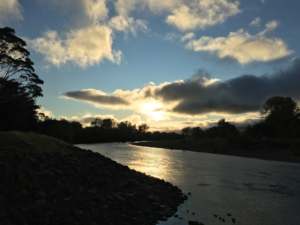
On resurrection morning, Kate glanced at the crumpled grave clothes and cautiously opened the door of her tomb. The sun shone; new life beckoned but did she have what it took?
The descent to the tomb began on the Ides of March, the day 51 people were gunned down at a mosque in Christchurch. She’d gone to the pub as usual, but on that Friday night there was just the one topic of conversation. There was also a stranger in her group.
He was interesting, attractive and had a way with words. The two of them created an intense bubble to the point where Kate couldn’t recall anyone else being there. Even the small space they were sitting in seemed to expand to the size of an arena. The magnetism was irresistible, the connection electric. A doorway opened. Falling in love became inevitable.
But humans are inevitably laden with baggage, suitcases stuffed full of unresolved pain and turmoil. Over time the contents tend to decay, seeping onto the ground on which we try to stand. These two were no different.
As time went by, Kate wondered if she was projecting her ideal male image onto the stranger and if he was doing the same in reverse to her. Unless they could get beyond the initial love bubble and get to know each other as real people, it couldn’t last. But they kept slipping on what oozed from their baggage.
One year later, COVID 19 arrived and Kate was locked down with the image, not the person. Awkward, she thought, when a male figure appeared in the mirror whilst she was doing her hair.
‘Who the hell are you?’ she demanded.
‘Who do you say I am Kate?’ he replied.
In The Invisible Partners, author John Sanford says, ‘To be in love with someone we do not know as a person, but are attracted to because they reflect back to us the image of the god or goddess in our souls, is, in a sense, to be in love with oneself, not with the other person.’
This is tough stuff. To contemplate that there could be some kind of differently gendered godness within us all. And that this godness needs to be known and loved before we can ever properly love someone else. If we don’t manage that we remain self-absorbed and toxic to any burgeoning relationship. But trying to recognise, engage with and integrate this ‘other’ within provokes uncomfortable encounters with our inner world, something most of us prefer to avoid.
Kate looked back into the tomb and noticed that the mound was stirring.
‘Are you coming?’ she called.
‘You mean me?’ said the male figure disentangling himself from long linen strips that smelled vaguely of some kind of incense.
‘Yes,’ said Kate, ‘you’re it for the time being, given the pandemic and all.’
‘Charming,’ he said, smiling as he walked right into her.
Kate, and she supposed he too, sat on the tree that had fallen outside the tomb. They looked out across the river that was meandering by; other times it raged past. The river mirrored the struggle in her own psyche to marry the disparate characters within.
‘Who are you?’ she asked again, knowing there wouldn’t be an answer, or one she could cope with, yet.
Easter, she thought, isn’t a one off, more of a staggered process through life. There are many crucifixions, multiple deaths and only very slow dawnings.

May you join
In deep intimacy
With the masculine
That us born anew
Within you
That is born
Fat fingered
Freudian
Thanks and for the chuckle!